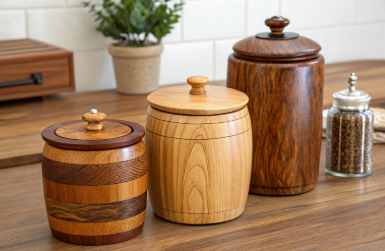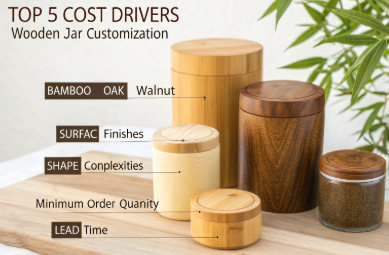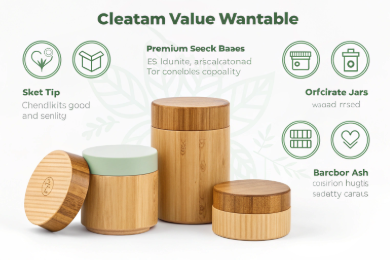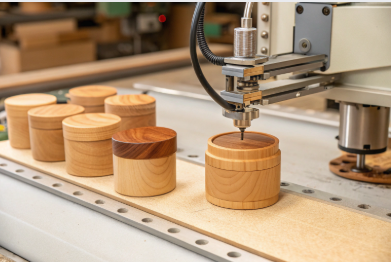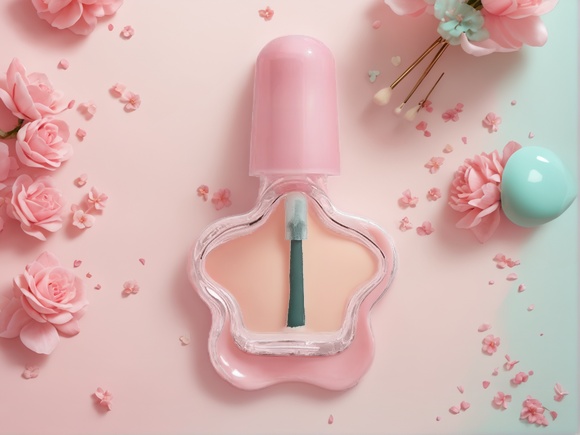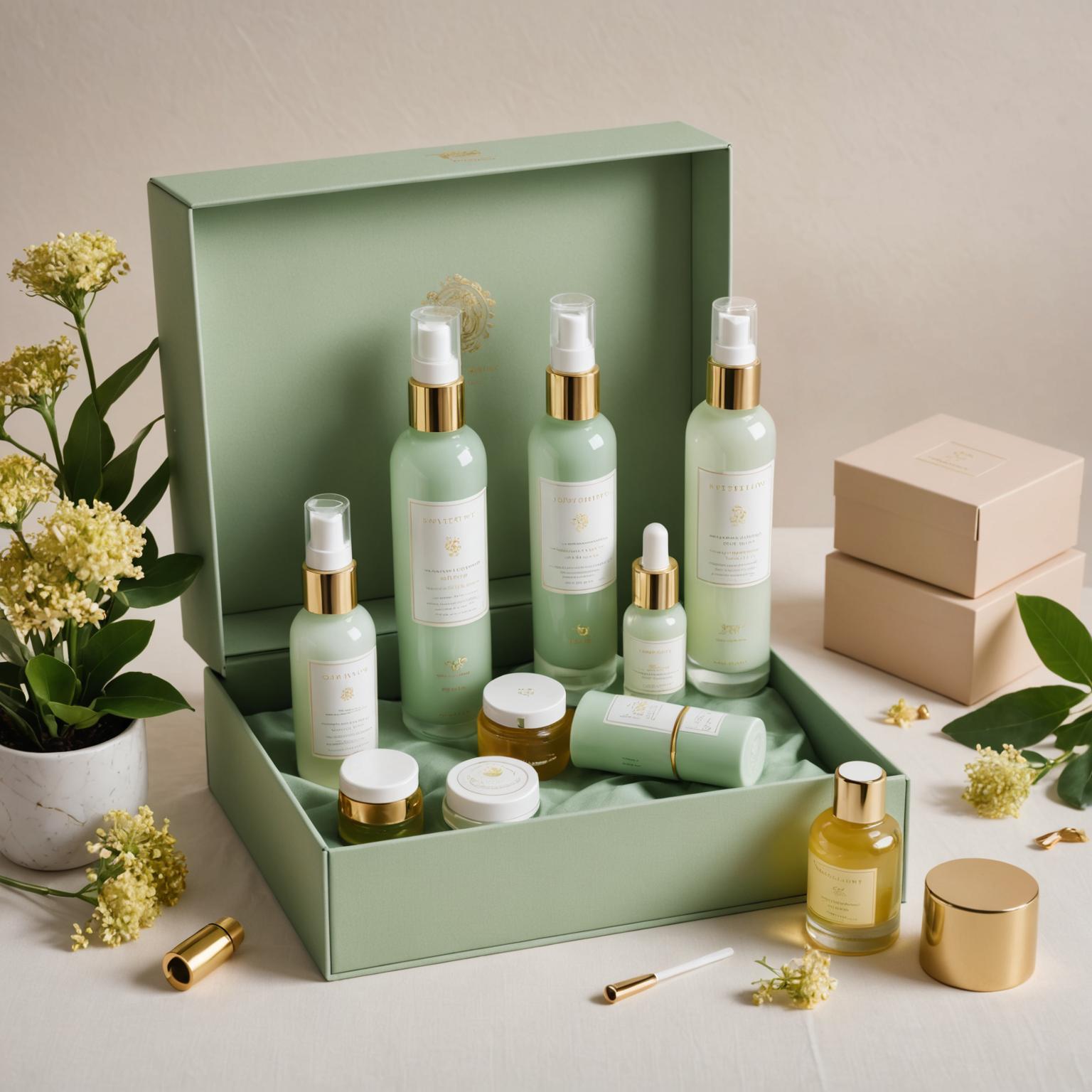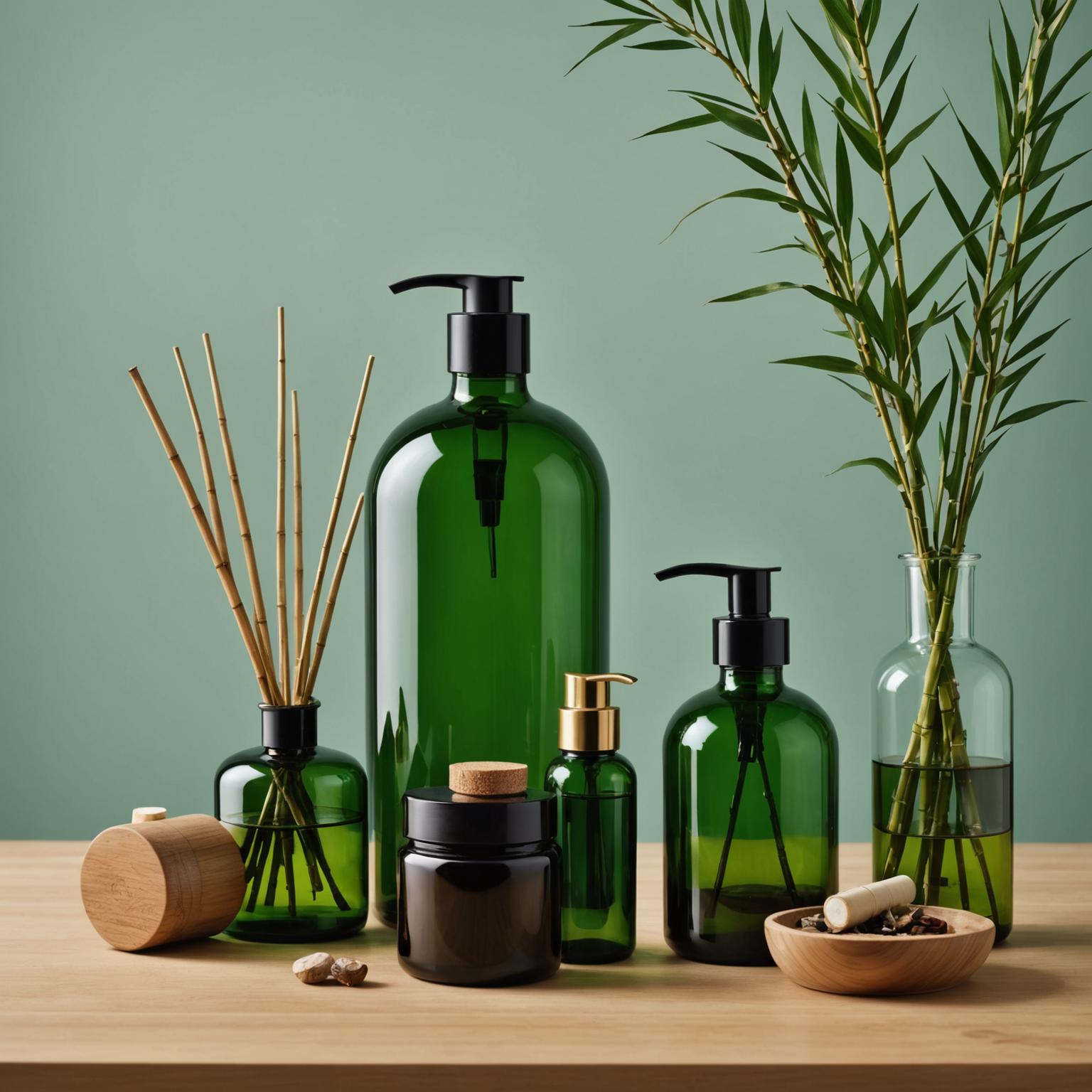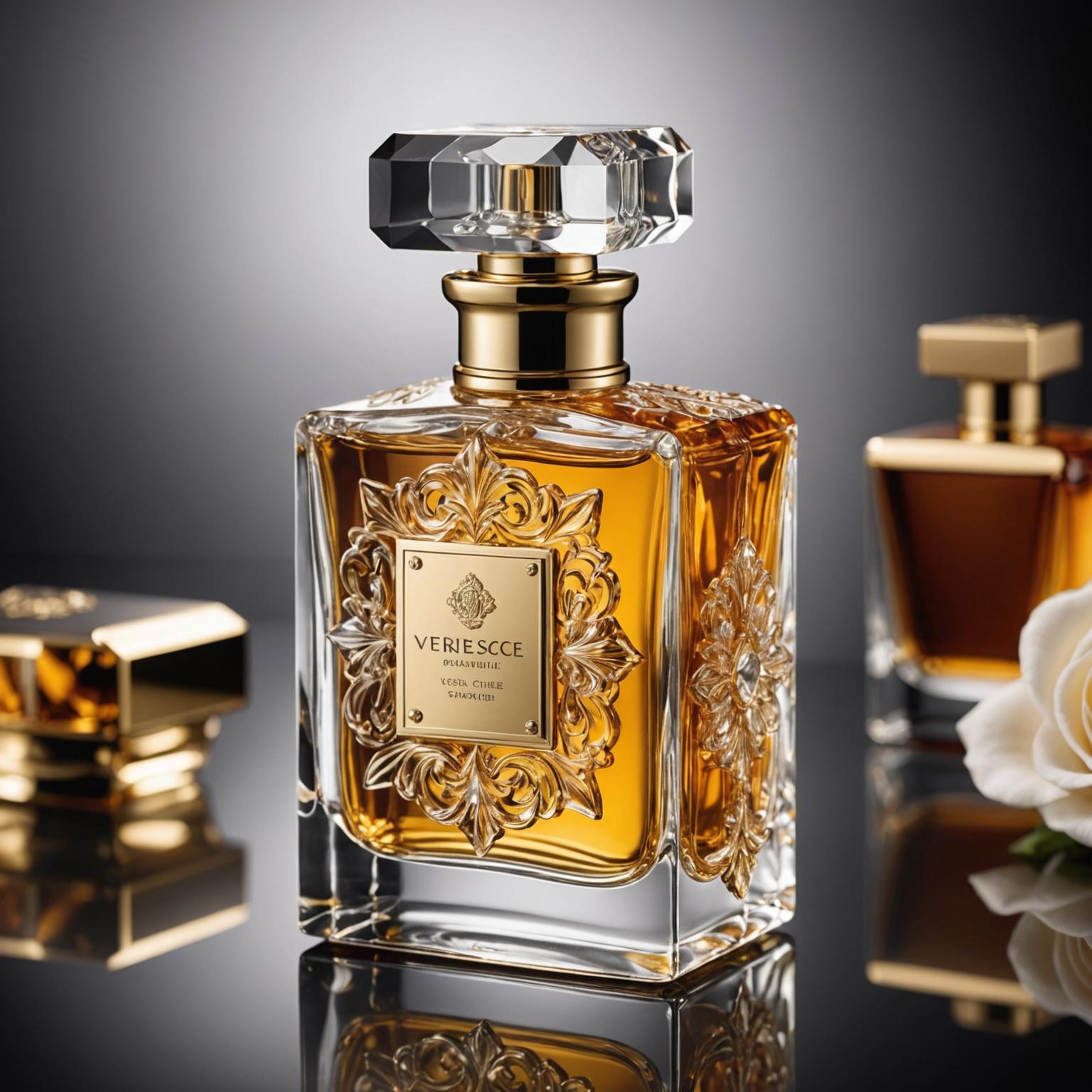Wooden jars are beautiful, sustainable, and premium—but their customization comes with hidden costs.
The top five cost drivers in wooden jar customization include material type, finish, shape complexity, MOQ, and lead time—all of which affect your total project budget.
Understanding these factors upfront will help you avoid unpleasant surprises and better negotiate with suppliers like us at PauPack.
How Does Wood Type Influence Custom Jar Pricing?
Not all wood is created equal.
The type of wood you choose—bamboo, walnut, ash, beech, or pine—can significantly impact cost due to sourcing difficulty, weight, processing methods, and aesthetic grade.
Wood Type Cost Breakdown
| Wood Type | Cost Level | Characteristics |
|---|---|---|
| Bamboo | $$ | Fast-growing, sustainable, uniform grain |
| Beech | $ | Lightweight, pale color, easily machined |
| Walnut | $$$$ | Dark, premium feel, harder to work |
| Ash | $$$ | Durable, visually appealing grain |
| Pine | $ | Affordable, soft, good for bulk formats |
At PauPack, we often recommend bamboo for brands balancing sustainability and cost. It's strong, moisture-resistant, and available in consistent quality due to our reliable sourcing partnerships.
Why Surface Treatment Significantly Affects Cost per Unit?
Finish is the face of your brand—and some finishes cost more than others.
Customizing the surface of a wooden jar—whether through varnish, engraving, oiling, or painting—can increase production complexity and unit cost.
Here’s how different treatments compare:
| Treatment | Description | Cost Impact |
|---|---|---|
| Clear Varnish | Protective glossy layer | Low |
| Natural Oil Finish | Enhances grain, eco-safe | Moderate |
| Color Stain | Tinted but transparent | Moderate |
| UV Print or Silkscreen | For logo or design | High |
| Laser Engraving | Precise, tactile branding | High |
| Lacquer Paint | Fully colored surface | Highest |
PauPack offers all major surface treatments in-house. For cost-sensitive projects, we recommend a natural oil finish + laser logo—elegant, eco-friendly, and budget-conscious.
What Role Does Jar Shape Complexity Play in Production Expense?
The more complex the shape, the higher the cost—especially with wood.
Intricate or non-standard wooden jar shapes require custom tooling, longer CNC time, more waste material, and greater QA investment.
Shape and Cost Relationship
| Shape | Tooling Cost | Production Speed | Waste Risk |
|---|---|---|---|
| Round/Cylinder | Low | Fast | Minimal |
| Square or Tapered | Moderate | Medium | Higher |
| Custom Molded (e.g., heart, flower) | High | Slow | Very high |
At PauPack, our team evaluates your jar shape early in the design phase. We offer 3D mockups and technical drawings to estimate tooling needs—and suggest ways to simplify the design without losing visual appeal.
How MOQ and Lead Time Can Make or Break Your Budget?
Many buyers underestimate how order volume and timing affect wooden jar pricing.
Low MOQ and tight lead times increase unit cost because they require manual setups, dedicated batching, and often expedited logistics.
MOQ vs Cost Snapshot
| MOQ | Cost Impact | Lead Time |
|---|---|---|
| 1000 pcs | Higher per unit | 35–45 days |
| 3000 pcs | Balanced | 30–40 days |
| 5000+ pcs | Economical | 25–35 days |
Need a rush order? Air shipping wooden jars adds $1.50–$2.50 per unit on top of the base cost. At PauPack, we offer flexible tiered pricing and stock pre-milled blanks to help reduce setup time and cost for urgent orders.
How PauPack Helps Optimize Wooden Jar Custom Projects for Value?
Navigating wooden jar customization can be complex—but with the right partner, it doesn’t have to be expensive.
At PauPack, we help clients balance aesthetics, functionality, and budget through smart design choices, transparent costing, and lean manufacturing.
Our value-optimized solutions include:
-
In-stock jar bases that reduce tooling needs
-
Sustainable woods that look premium but cost less
-
Integrated cap/jar matching to eliminate compatibility risk
-
Free mockups and low-cost pre-production samples
-
Global logistics and bonded warehousing to reduce total landed cost
Whether you’re designing for luxury cosmetics, herbal balm, or home fragrance, we ensure your wooden jars look stunning and scale profitably.
Why Sustainable Sourcing Matters in Wooden Jar Production?
Wood packaging starts with trees—and not all wood is responsibly harvested.
Sustainably sourced wood typically costs more upfront, but offers long-term brand credibility, reduced environmental impact, and smoother import into eco-regulated markets.
Cost Implications of Sustainable Wood
| Source Type | Example | Cost Tier | Notes |
|---|---|---|---|
| FSC-certified Bamboo | Fast-renewable, traceable | $$ | Top pick for balance |
| Local-regulated Beech | Eastern Europe, China | $ | Good for bulk orders |
| Exotic Hardwoods (Teak, Mahogany) | Premium grain, high demand | $$$$ | Best for luxury jars |
At PauPack, we use FSC-certified and regionally compliant wood for most projects. This not only meets EU/US regulations but also supports your sustainability storytelling—an essential piece for modern beauty branding.
How Branding Elements Drive Up Customization Costs?
Wood is natural—but logos, labels, and color treatments are not.
Custom branding like engraving, inlays, or full-color prints can add 10–40% to your cost depending on technique and quantity.
Branding Methods Comparison
| Method | Look | Cost Impact | MOQ Friendly |
|---|---|---|---|
| Laser Engraving | Elegant, etched finish | Moderate | Yes |
| UV Color Printing | Vivid branding, multi-color | High | No (needs >3000 pcs) |
| Heat Press Foil | Shiny gold/silver effect | Moderate–High | Limited availability |
| Labeling | Adhesive or silk screen | Low | Yes |
At PauPack, we help clients simplify artwork for optimal performance on wood. Our in-house design team can advise how to achieve strong visual presence with cost-effective finishes.
What’s the Real Cost of Choosing Premium Design Features?
Want a wooden jar that doubles as a keepsake or retail centerpiece? It’ll show up on your unit cost.
Premium design elements like double-walled construction, magnetic closures, or fabric linings can add 20–70% to base pricing.
Common premium add-ons include:
-
Hidden threaded inserts for airtight seal
-
Dual-material base (wood + metal/glass)
-
Interior EVA or felt padding
-
Sliding or hinged lids with metal hardware
At PauPack, we suggest combining one signature feature (like a magnetic lid) with a minimalistic body to keep luxury appeal while controlling costs.
How PauPack Balances Artisanal Craft with Mass Production?
Handcrafted or scalable? With PauPack, you don’t have to choose.
We combine artisanal techniques with CNC automation to offer custom wooden jars that feel handcrafted—without the handmade price tag.
How we do it:
-
Use pre-milled jar blanks from in-stock inventory
-
Automate repetitive shaping and engraving steps
-
Apply hand-finished treatments (oiling, polishing) only at final stages
-
Coordinate multi-unit packaging (jars + boxes + inserts) under one workflow
This allows you to scale wooden packaging for Shopify, Amazon, or boutique retail—without losing the tactile, premium feel that your customers love.

How to Budget Smartly for Your Next Wooden Packaging Project?
Great packaging doesn’t have to be expensive—it just has to be planned right.
To budget wisely for wooden jars, map out your goals, prioritize must-have features, and work closely with a supplier who understands cost-control in customization.
Here’s your smart budgeting checklist:
| Step | Budget Tip |
|---|---|
| Define Primary Function | Storage, gift, reuse? Design accordingly |
| Choose 1 Hero Feature | Lid style, finish, or shape—not all three |
| Approve Samples Early | Reduces post-production errors and costs |
| Order in Batches | 2000–5000 pcs = best value window |
| Use PauPack Design Support | Save on design fees and trial & error |
PauPack clients often start with a small run (1000–3000 units) using standard shapes and a signature branding element. Then, as sales grow, they invest in more custom tooling or premium finishes.
Conclusion
Wooden jar customization is a design opportunity and a cost challenge—if managed right. PauPack helps you control the budget while building packaging that inspires and sells.




